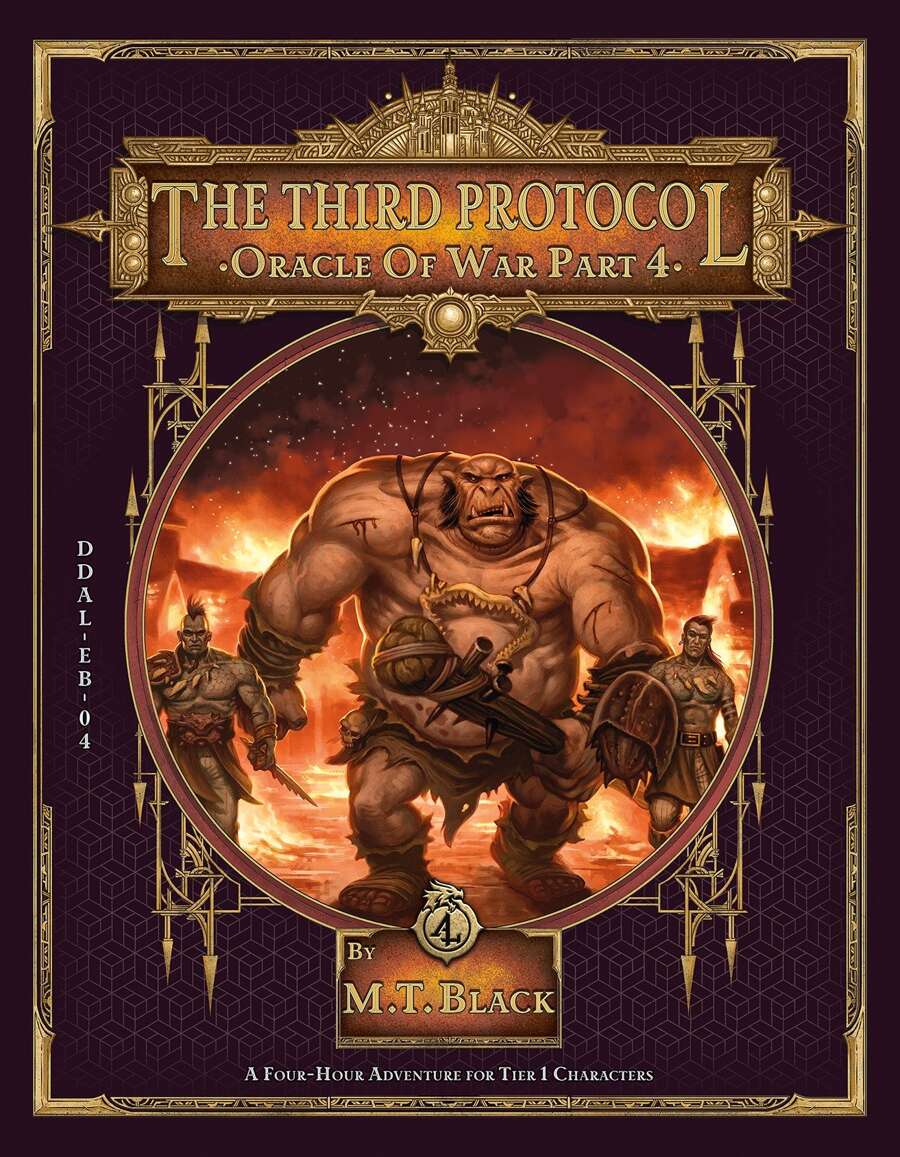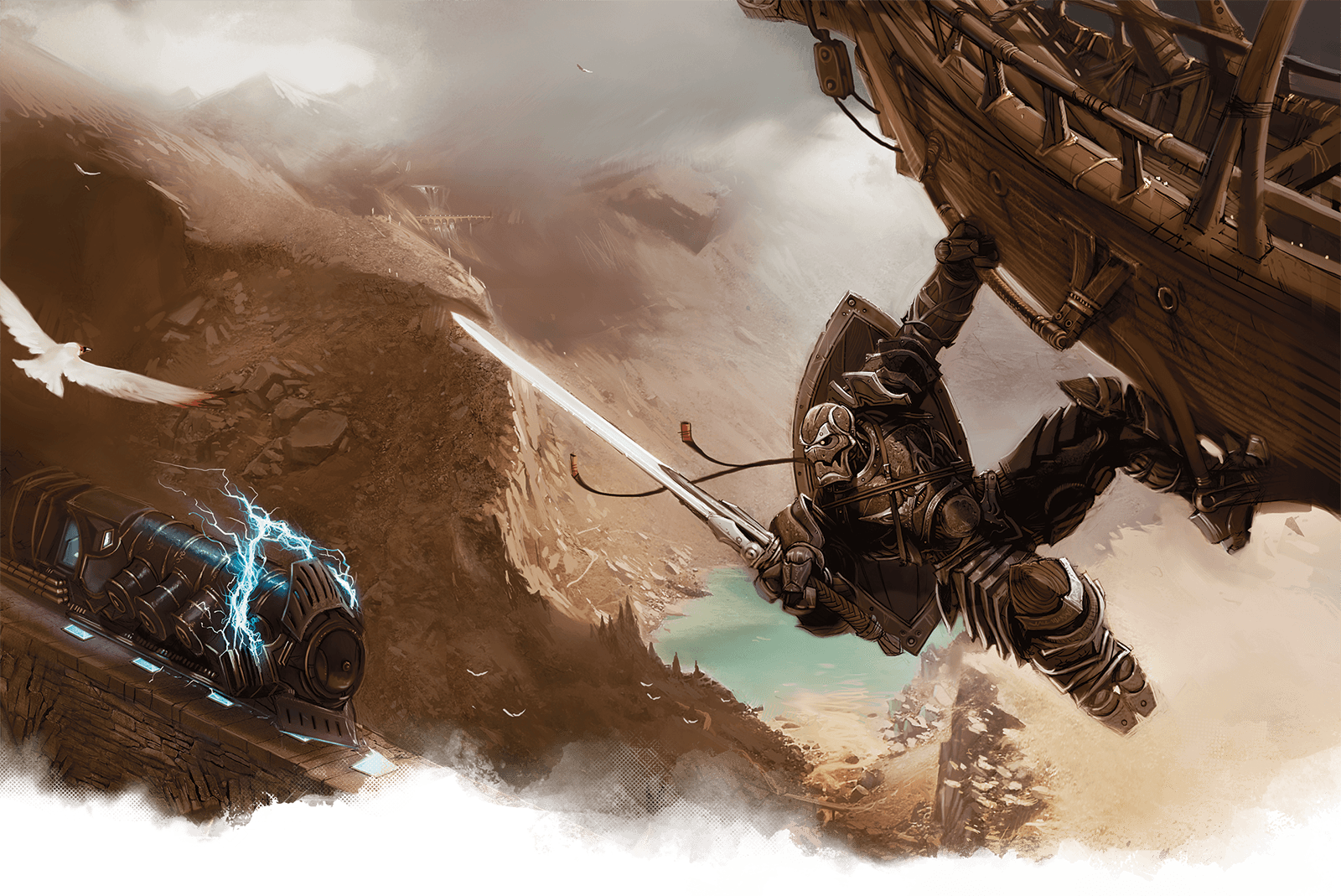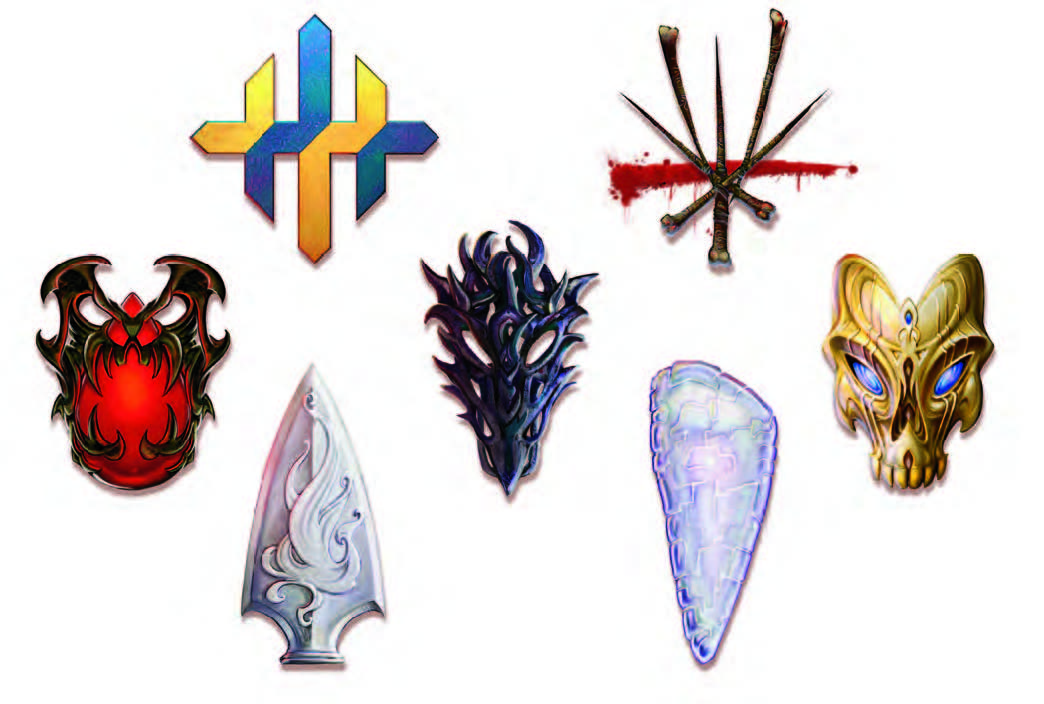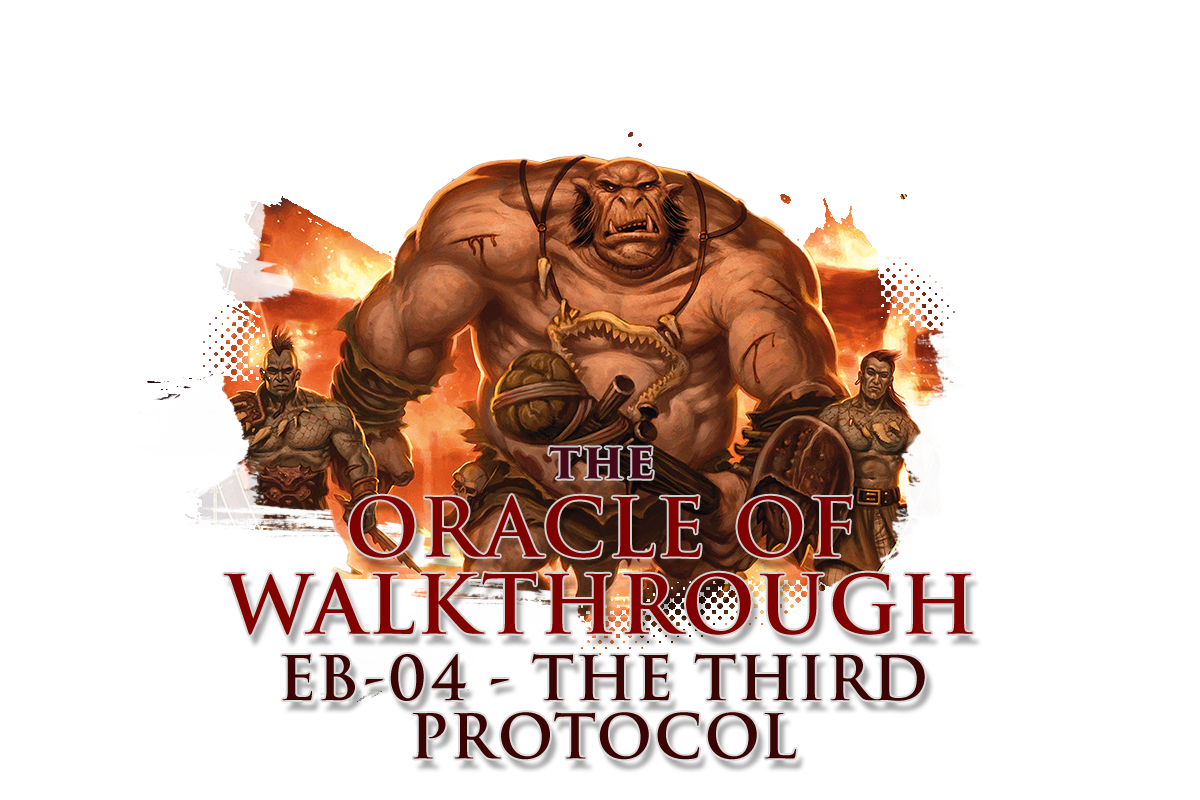Running EB-04: The Third Protocol

The adventurers make their slow trudge back to Salvation (with or without the Oracle of War). However, they won’t have an easy time as they have to deal with the aftermath of EB-03, along with the sudden arrival of a band of mysterious agents on the Lightning Rail.
The module is a mix of stealthy exploration and ambush-based combat. Players should feel like they are underdogs suppressing a much stronger band of foes.
While the focus is clearly on the players’ efforts to foil the assassins, part of the fun is exploring the areas of Salvation. Some of this involves religious aspects of Eberron, like the Church of the Silver Flame and the Shrine to the Traveler.
As usual, if you’re short on time, at least look out for the bolded points.
The Lightning Rail
As mentioned in EB-02, magical-technology has grown to the point that has become comparable to modern technology. One of the finest examples of magical-technolgy is House Orien’s pride and joy; the Lightning Rail.
Spanning the Five Nations even before the Last War, the Lightning Rail all but ensured Orien’s grip on international travel. House Orien dominated supply and logistics chains across the continent for more than a century.
However, the Lightning Rail infrastructure has suffered considerably as a result of the Last War. With the destruction of Cyre, miles of tracks connecting the very centre of Orien’s network has been lost. Moreover, the recent invention of House Lyrandar airships has toppled Orien’s long-standing monopoly on long distance travel. Orien no doubt has plans to reclaim the lost stretches of rail in the Mournland.
It is therefore no coincidence that the last stop on this track is Salvation, right before the Mournland. Saal Dreadstroke and his band of assassins disembark at this literal end of the line and attempt to track down the Oracle of War.
The Lightning Rail will continue to recur as the scope of the campaign widens. The players be travelling via Lightning Rail in EB-05 to EB-07. Furthermore, the Tier 2 Epic, EB-EP-02, Rolling Thunder, evokes a classic Eberron scenario; the Lightning Rail heist.

The Religions of Eberron

Players may have encountered Mother Jahanah during EB-01. This module will provide them with further opportunity to interact with the Church, as well as seek shelter at the shrine of the Traveler (and potentially reencounter Whist). I figure this is as a good a point as any to touch on religion in Eberron.
Deities are not obvious like those in the Forgotten Realms. Gods do not dispatch avatars or walk obviously amongst mortals. While the power of faith is real, the gods are more of concepts than actual beings.
The most dominant religion is the pantheon of the Sovereign Host. This pantheon consists of nine gods who reflect positive aspects of society and the world. Conversely, the Host is mirrored by the Dark Six, who represent aspects of chaos and destruction.
The Traveler is a member of the Dark Six but is an oddity even amongst them. The Traveler is unpredictable and not entirely malicious, with a focus on change and a penchant for cunning and guile. It is little wonder why many of his followers consist of changelings (such as Whist).
In comparison to the Sovereign Host and the Dark Six, the Church of the Silver Flame follows a divine purpose instead of “true” deities; a purpose to protect the world from evil. The Silver Flame actively stands against all that it perceives as evil in the world, whether through charity or martial deed. The closest analogy to the real world would be the Vatican Church, especially considering the nation of Thrane is a theocracy controlled by the Church.
Despite the lack of conventional fantasy deities in Eberron, religion plays a major role in the motivations and history of Khorvaire. For now, these elements do not factor into the Oracle of War storyline but their relevance can bring life into the motivations of players and NPCs.
Conclusion
The Third Protocol draws the Tier 1 section of the Oracle of War campaign to a close, leading to further questions on the true nature of the device.
Of course, it wouldn’t be Eberron if the players didn’t get to visit Khorvaire’s largest and most iconic city; Sharn, the City of Towers in EB-05, A Century of Ashes. The change of scenery will do them good and no doubt they’ll discover both questions and answers waiting for them there.
DDAL-EB-04, The Third Protocol, is purchasable here at DM’s Guild.
Share this:
- Click to share on Facebook (Opens in new window) Facebook
- Click to share on X (Opens in new window) X
- More
- Click to share on Telegram (Opens in new window) Telegram
- Click to print (Opens in new window) Print
- Click to share on LinkedIn (Opens in new window) LinkedIn
- Click to share on Reddit (Opens in new window) Reddit
- Click to share on Tumblr (Opens in new window) Tumblr
- Click to share on Pinterest (Opens in new window) Pinterest
- Click to share on Pocket (Opens in new window) Pocket
- Click to share on WhatsApp (Opens in new window) WhatsApp

